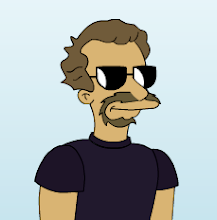It also a great time to meet new car people & car owners without the huge crowds, obstructed views, velvet stanchions, and intense popcorn smell.
Oh, you haven't heard? Daytons will be there, in the Suede Palace, where the coolest old hot rods are on display.
Two years ago my other roadster was there. But it wasn't "good enough" to be inside and was stuck outside in the rain. That show was memorable though, perhaps for the wrong reasons.
This year is a little different, Daytons is my golden ticket inside the Suede Palace! Who's going to say NO to such a crowd pleasing hot rod? Maybe it won't be the coolest in the Palace, but it will have it's champions.

The rains lately have sort of had put a damper on the pace of the getting-readiness. But I was able to have the new front tires installed over the weekend. Bill's 50 year old Firestone grooved tires where showing their age --not a good thing with tires. And rather then continue to risk damaging the priceless wheels at every drive, I finally bought some replacements from Coker Tire.

The differences are small. The old tires were 5.50-16, the only new 16" reproduced are 5.00-16, so they are slightly smaller. I could tell right off the change in looks. Considering all the hours I spent staring at the car, studying it's every detail, a smaller tire is obvious --to me. The new are smaller and rounder, the old were wider & flatter (cracked & chipped too).
 |
| Re-capped bias tires from Inglewood Tire Service |
Another thing I had to do was fix the spare rear wheel, the ones with the big, fat meats. The tubes inside had deflated and the valve stem has fallen inside the tire. Maybe I could have fished the valve through the hole and tried to inflate them. But I decided to just put in new ones rather then possibly waste more time.
You're are going to have to wait to see these on the car. I'm saving them for the show only.
Before I end this post I have to mention a great wheels shop I discovered just recently. Pico Wheels Service, not your average tire shop, they are a specialty wheels shop. They may be the only people I would have trusted (besides myself) to work on my priceless, old Dayton wires, and irreplaceable rear tires. Family owned & operated since 1920, I have to give a big thanks to Garry (grandfather) & Chad (grandson) for a great job. They'll be balancing the wide-5 wheels on my track-T soon (because they have the adapter).
Here is my original roadster parked at the 2009 GNRS. Next to me is the Model A of Jordan Graham from Santa Ynez, CA.
This was Thursday, it rained the next two days. I had fun.


























